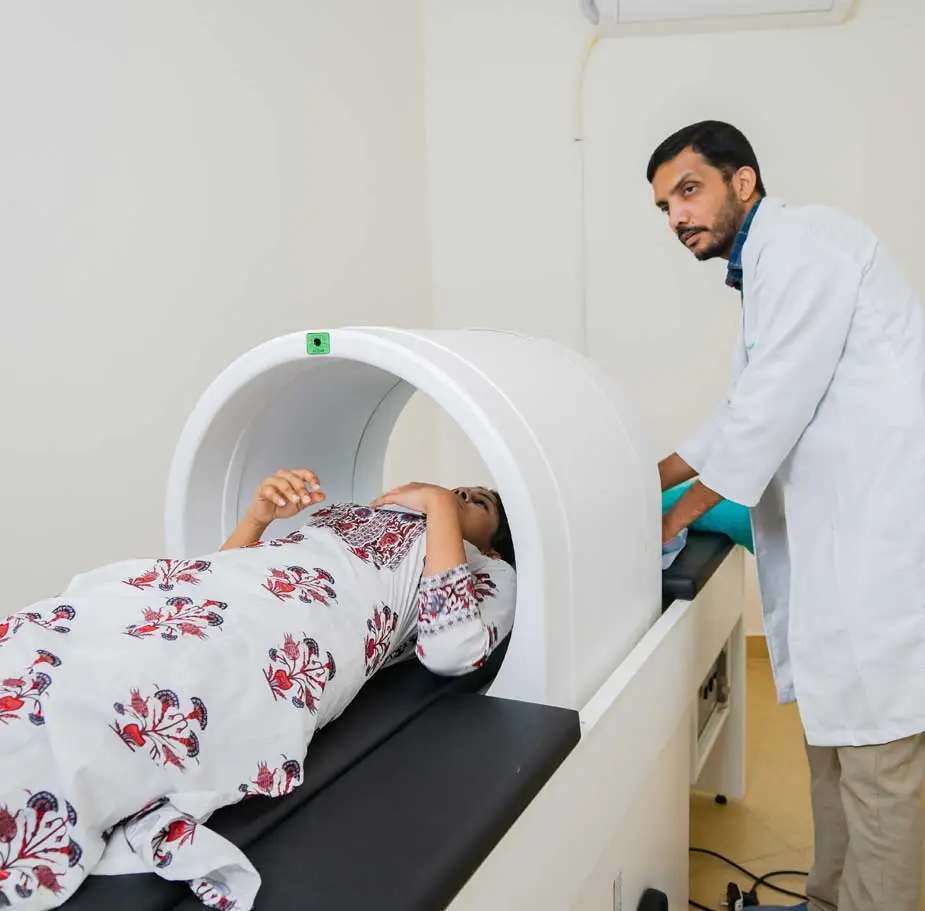Ankylosing Spondylitis
Symptoms
Symptoms of ankylosing spondylitis may include:
Insidious onset of back pain in the sacroiliac (SI) joints and gluteal regions, which progress to entire spine.
Age, less than 45 years
Morning stiffness
Night pain
Rest pain relieving with activities
Kyphotic deformity
Eye diseases
Breathing difficulty
Intermittent low-grade fever
Fatigue
Weight loss
Causes
The causes of ankylosing spondylitis may include:
Presence of genetic marker- HLA-B27
Diagnosis
X-ray, oblique views of sacro-iliac joints is required in early stages to appreciate the involvement. X-ray can reveal:
– Haziness of the sacro-iliac joint
– Irregular subchondral erosions in SI joints
– Sclerosis of the articulating surfaces of SI joint
– Widening of the SI joint space
– Bony ankylosis of the SI joint
– Calcification of SI ligament and sacro-tuberous ligament
– Calcification at the attachment of the muscles, tendons and ligaments
– Squaring of vertebrae, normal anterior concavity of the vertebral body is lost because of calcification
– Loss of lumbar lordosis
– Bamboo spine appearance
– Reduced joint space
– MRI, used to detect inflammation
Treatments
Main aim is to control the pain, maintain maximum degree of joint mobility and reduce morning stiffness. This can readily achieve by life long pursuit of a structured exercise program. A specific program with progression is vital to maintain the joint function.
Our Arthritis Wellness & Rehabilitation Program incorporates an advanced modality called Pulsed Cell Repair Therapy (PCRT). PCRT directs a series of electromagnetic impulses through injured tissue. Each pulse induces a tiny electrical signal that stimulates cellular repair and harnesses the body’s own ability to heal itself. This natural signal promotes the body to repair damaged or worn tissues/cartilages and to maintain healthy and proper functioning of the joint.
Sometimes, because of aging, injury or disease, signals that are naturally produced by the body is disturbed. When this occurs, the body is unable to repair the damage itself. This results in pain, inflammation, and loss of proper function in the joint. PCRT is unique in that it mimics the body’s natural signal, activating the normal healing process and stimulates the growth and repair of the damaged tissue.
The treatment session is typically 9 to 12 days, first 9 days should be continuous without interval. Because of the regenerative process, patient is advised for rest without any vigorous movements in the joint. If the patient is in pain, we will manage with other electrical modalities and then start with PCRT. After the PCRT sessions, we begin with our muscle strengthening exercises and lifestyle modifications, approximately 3 to 4 weeks after completing the PCRT sessions, which helps the patient become functionally independent.
In ankylosing spondylitis, sacroiliitis is common and ESWT is very effective to reduce the inflammation. ESWT uses sound waves (high amplitude pulses of mechanical energy) to breakup infected tissues and stimulate the rapid healing process. The energy triggers regeneration and reparative processes of the bones, tendons and other soft tissues. ESWT is used to treat chronic, sub-acute and acute conditions. After the shockwave session cryotherapy is advised to avoid muscle soreness.

